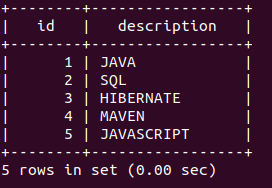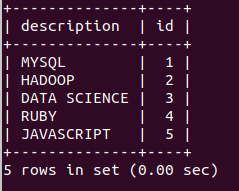Updated March 8, 2023
Introduction to SQL identity
SQL provides us with a property named Identity that is basically a sequence maintained against the column of the table for which that property is used. This property proves to be of immense help when we want to generate the unique identifier values for certain columns. Identity property is mostly used for the columns, which we want to treat as the primary key. As the primary key column must be unique for identification purposes, Identity property helps to assign the auto-generated unique value incrementally for that column.
Syntax
The syntax of the IDENTITY property is as follows –
IDENTITY [ ( seed , increment ) ]where the seed is the initial value of the sequence that will be created against that column for that table, and the increment value will be the step value with which each time the sequence value of IDENTITY will get incremented for each of the newly inserted value.
Sequence and Identity property
SQL sequence is a list of integers. A sequence generates the integers in ascending order and is mostly used to get the unique numbers that are further used for identification purposes. For example, book id in the library table, task id to store the tasks/processes, etc. We can use the Identity property to automatically create a sequence in SQL for a particular column of the table. The only difference between sequence and identity property is that the sequence is user-generated and can be shared between multiple tables, while identity property is system-generated sequence property that is assigned to a single table. This column is most often the column on which the primary key is defined. There are some of the points that you should know about the Identity property/property that are listed below –
- There can be only one column in a particular table that can be declared and assigned the Identity property.
- The data type of the column to which the Identity property is assigned is mostly integer.
- The column which is assigned Identity property needs to be a key/indexed column. This key can be either a primary key or a unique index key.
Working of Identity property column
- If declared with IDENTITY(2,1), the value of the Identity column begins with 2 and then it is incremented by 1 whenever a new row is inserted with Identity column value as null or skipping the insertion of this column while inserting a new record in that table. Here, 2 is called the seed, the first parameter, and 1 is the increment value by which the value will increase each time a new row is added.
- If we want to add the IDENTITY property to a column that is previously present in the table. Then we can do so by dropping that column of the table and reading it using the IDENTITY property assigned to it with the help of the ALTER TABLE command.
- If we try to insert the record by specifying the column’s value, there will be two possible cases. Suppose the value that is inserted in the Identity column does not exist in the table. In that case, SQL will allow its insertion, and the value of the sequence of that Identity column will be set to the value that we inserted. The next value that will be retrieved from that sequence will be equivalent to the current inserted value +increament parameter set the IDENTITY property if IDENTITY_INSERT on that table is ON else, it will throw an error if IDENTITY_INSERT on that table is OFF. In case if the value already exists in the table for the Identity column, an error will be issued saying a column with that value of the Identity column already exists in the table.
- If we try to update the value of the Identity column, there will be two cases. Firstly, if the value that we are updating is present in the table, then it will issue the error saying the duplicate-key error for the column, which is declared as Identity by us as it also has an implicit unique index. Secondly, if the value that we are updating for that column does not exist in the table, then that value will be updated for the row, and the sequence value will be set to the current value that we updated if IDENTITY_INSERT on that table is ON else it will throw an error if IDENTITY_INSERT on that table is OFF. Hence, when we will insert the record next time, the value of the sequence that we will get will be our updated value + increment parameter value set while defining the IDENTITY property.
- Whenever we delete the row in the last inserted table, then the next value that we will get for the auto-incremented column will not be the same as the value that we deleted. Whether the deleted value will be used or not usually depends upon the table’s storage engine that we have created. For MyISAM and InnoDB engines, the deleted row value of Identity is usually not used, and the new row is entered with the value that is equal to deleted row id + increment parameter value set while defining IDENTITY property. For example, if we deleted the maximum/last inserted row with id column 15, then the next value we will insert will have value 17 instead of 15 if we set the increment value parameter to 2.
Example of SQL identity
Assigning IDENTITY property to new table’s column while creating table –
Let us create one table named educba_ identity1 using the following create table query –
CREATE TABLE educba_identity1 (
id INT NOT NULL IDENTITY(1,1),
description VARCHAR(45) DEFAULT NULL
);that gives the following output –
Let us insert some records in the table –
INSERT INTO educba_identity1(descripion) VALUES("JAVA"),("SQL"),("HIBERNATE"),("MAVEN"),("JAVASCRIPT");that gives the following output –
SELECT * FROM educba_identity1;that gives the following output –
Assigning IDENTITY property to existing table’s column –
CREATE TABLE educba_identity2 (
id INT NOT NULL,
description VARCHAR(45) DEFAULT NULL
);that gives the following output –
ALTER TABLE educba_identity2
DROP COLUMN id;that gives the following output –
ALTER TABLE educba_identity2
ADD id INT IDENTITY(1,1);that gives the following output –
Let us add some records in educba_identity2 –
INSERT INTO educba_identity2(descripion) VALUES("MYSQL"),("HADOOP"),("DATA SCIENCE"),("RUBY"),("NODEJS");that gives the following output –
SELECT * FROM educba_identity2;that gives the following output –
Conclusion – SQL identity
We can use the Identity property to generate the unique values that are incremented by the value specified in the second parameter to the column in the table. Note that one table can contain only one column with the Identity property in SQL.
Recommended Articles
We hope that this EDUCBA information on “SQL identity” was beneficial to you. You can view EDUCBA’s recommended articles for more information.






